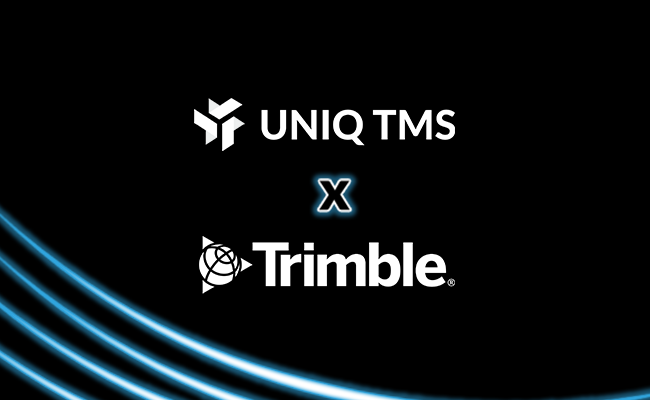
Maximizing return on investment (ROI) is a top priority for any company across all industries. One area where businesses can achieve significant cost savings and increased efficiency is transportation management. By implementing reliable and innovative transportation management solutions (TMS), organizations can streamline their logistics operations, reduce expenses, and boost ROI like never before.
Understanding the Basics of TMS
Before we delve into the immense potential of TMS in enhancing ROI, it’s essential to have a clear understanding of what TMS entails. TMS, short for Transportation Management System, is a powerful software solution designed to optimize the planning, execution, and monitoring of transportation operations. It encompasses various functionalities, such as routing and scheduling, carrier selection, freight auditing, and more.
Transportation Management Systems have evolved significantly over the years, incorporating advanced technologies like artificial intelligence and machine learning to streamline processes further. These cutting-edge features enable TMS to provide predictive analytics, dynamic pricing models, and real-time risk assessment, revolutionizing how companies manage their supply chain operations.
Defining TMS: A Brief Overview
At its core, a TMS acts as a central hub, consolidating transportation-related data and providing real-time visibility into the entire supply chain. It enables companies to manage all aspects of transportation efficiently, from order creation to delivery, while optimizing resources and minimizing costs. By automating routine tasks and offering actionable insights, TMS empowers businesses to make data-driven decisions and achieve better outcomes.
Furthermore, TMS facilitates seamless integration with other essential systems, such as Warehouse Management Systems (WMS) and Enterprise Resource Planning (ERP) software. This interoperability enhances operational synergy across different departments within an organization, leading to improved coordination and overall performance.
The Role of TMS in Transportation Management
With the complexity involved in modern-day logistics, the role of TMS in transportation management cannot be overstated. TMS serves as a comprehensive control tower, offering real-time tracking, intelligent route planning, and seamless collaboration among stakeholders. It enables businesses to optimize carrier selection, consolidate shipments, and reduce empty miles, resulting in lower freight costs and improved operational efficiency.
Moreover, TMS plays a crucial role in enhancing customer satisfaction by providing accurate delivery ETAs, proactive issue resolution, and transparent communication throughout the shipping process. This customer-centric approach not only fosters loyalty but also strengthens the brand reputation in a competitive market landscape.
The Connection Between TMS and ROI
Now that we have established the foundations of TMS, let’s explore the direct impact it has on ROI.
Transportation Management Systems (TMS) play a crucial role in the logistics and supply chain industry by revolutionizing the way companies manage their transportation operations. TMS software is designed to streamline processes, increase efficiency, and ultimately drive cost savings for businesses of all sizes.
How TMS Impacts ROI
One of the primary ways TMS enhances ROI is by optimizing transportation operations. By automating processes and providing real-time visibility, TMS reduces manual errors, enhances productivity, and minimizes costly delays. With accurate and up-to-date information at their fingertips, companies can proactively address potential bottlenecks, optimize routes, and make informed decisions that positively impact the bottom line.
Furthermore, TMS enables companies to leverage data analytics and business intelligence tools to gain valuable insights into their transportation networks. By analyzing historical data and trends, businesses can identify opportunities for improvement, negotiate better rates with carriers, and strategically plan their logistics operations to maximize efficiency and profitability.
Quantifying the ROI of TMS
Measuring the ROI of any investment is crucial, and TMS is no exception. The beauty of TMS lies in its ability to generate measurable results. By tracking key performance indicators (KPIs) such as transportation spend, on-time delivery performance, and inventory levels, businesses can quantify the tangible benefits of implementing TMS. These metrics serve as a foundation for assessing ROI and identifying areas that require further optimization.
Moreover, TMS offers scalability and flexibility, allowing companies to adapt to changing market conditions and business requirements. Whether it’s expanding into new markets, accommodating seasonal fluctuations in demand, or integrating with other systems, TMS provides the agility needed to stay competitive in today’s fast-paced business environment.
Key Features of TMS that Boost ROI
Now that we understand the impact of TMS on ROI, let’s explore some key features that make TMS an indispensable asset for any business:
Route Optimization and Its Impact on ROI
Route optimization is a game-changer when it comes to ROI. TMS enables businesses to analyze numerous parameters like distances, traffic conditions, and delivery constraints to determine the most efficient routes. By minimizing travel time, fuel consumption, and vehicle wear and tear, route optimization significantly reduces transportation costs, thus positively impacting ROI.
Moreover, route optimization doesn’t just benefit the bottom line; it also enhances customer satisfaction. By ensuring timely deliveries and efficient routes, businesses can build a reputation for reliability and responsiveness, leading to increased customer loyalty and repeat business.
Inventory Management through TMS
An often overlooked aspect of transportation management is inventory management. TMS offers valuable inventory visibility, allowing businesses to optimize stock levels, manage order fulfillment, and reduce carrying costs. By avoiding stockouts, minimizing excess inventory, and improving order accuracy, TMS aids in maximizing working capital and ROI.
Furthermore, effective inventory management through TMS can also lead to improved demand forecasting. By analyzing historical data and real-time inventory levels, businesses can anticipate customer demand more accurately, reducing the risk of stock shortages or surpluses and optimizing production schedules.
Freight Audit and Payment Solutions
Freight billing discrepancies can eat into profit margins faster than a hungry cheetah chasing its prey. TMS automates the freight audit process, detecting errors in invoices, ensuring accurate payment, and providing detailed reports. By eliminating overcharges and incorrect billing, businesses can recover substantial sums of money, ultimately increasing ROI.
Moreover, the transparency provided by freight audit and payment solutions can strengthen vendor relationships. By promptly resolving billing discrepancies and ensuring fair and accurate payments, businesses can build trust with their suppliers, leading to better terms, improved service levels, and potential cost savings in the long run.
Implementing TMS for Maximum ROI
While the benefits of Transportation Management Systems (TMS) are clear, implementing it successfully is key to maximizing Return on Investment (ROI). By strategizing and following a well-thought-out plan, businesses can harness the full potential of TMS to streamline their transportation operations and drive efficiency.
One crucial step in implementing TMS is to thoroughly assess your organization’s current transportation processes and identify areas that can be optimized. This initial evaluation will help in determining the specific needs and requirements that the TMS solution should address. By understanding your unique business challenges and goals, you can align the TMS implementation with your overarching strategy for sustainable growth.
Steps to Implement TMS
1. Evaluate and select the right TMS provider based on your specific needs and budget. Consider factors such as scalability, industry expertise, and customer support capabilities to make an informed decision.
2. Collaborate closely with the chosen TMS provider to ensure a seamless and customized implementation process. Establish clear communication channels and set realistic timelines to facilitate a smooth transition to the new system.
3. Train your team members thoroughly to ensure smooth adoption and utilization of the TMS. Provide comprehensive training sessions tailored to different user roles within your organization to maximize the system’s effectiveness.
4. Regularly monitor and measure key performance metrics to identify areas for improvement and track the impact of TMS on your operations. Utilize data analytics tools provided by the TMS to gain valuable insights and make data-driven decisions.
5. Continuously communicate and collaborate with your TMS provider to leverage new features, receive updates, and stay ahead of the curve in an ever-evolving transportation landscape. By fostering a strong partnership with your provider, you can explore opportunities for further optimization and innovation.
Overcoming Challenges in TMS Implementation
Implementing TMS can present certain challenges, such as resistance to change from employees accustomed to traditional processes and integration complexities when connecting the TMS with existing systems. To address these challenges, organizations should prioritize change management strategies, provide ongoing support and training, and seek guidance from TMS experts or consultants.
Remember, the rewards of implementing TMS far outweigh the initial hurdles. By embracing digital transformation in transportation management, businesses can enhance visibility, reduce costs, and improve operational efficiency, ultimately driving sustainable growth and competitive advantage in the market.
Future Trends in TMS and ROI
As we look ahead, it’s fascinating to consider the future of TMS and its impact on ROI. Several trends are poised to shape the landscape:
Predictive Analytics in TMS
TMS of the future will harness the power of predictive analytics, leveraging historical data and machine learning algorithms to forecast demand, optimize routes, and proactively mitigate disruptions. By providing actionable insights in real-time, predictive analytics will play a pivotal role in improving ROI and ensuring businesses stay one step ahead of the competition.
The Role of AI and Machine Learning in TMS
Advancements in artificial intelligence (AI) and machine learning will revolutionize TMS, enabling it to continuously learn, adapt, and automate processes. AI-driven TMS systems will detect patterns, identify inefficiencies, and suggest optimization strategies, allowing businesses to achieve even greater ROI through improved decision-making and operational excellence.
Sustainable Transportation and TMS
In an era of increasing environmental concerns, sustainability has become a crucial aspect of transportation. TMS will play a pivotal role in enabling businesses to adopt sustainable practices, such as reducing carbon emissions through optimized route planning and supporting alternative transportation methods. By aligning transportation strategies with sustainability goals, businesses can not only contribute to a greener future but also achieve long-term cost savings and enhanced ROI.
In conclusion, TMS transportation management solutions offer a treasure trove of opportunities for businesses to maximize ROI. By understanding the basics of TMS, recognizing its impact on ROI, and leveraging its key features, companies can unlock a world of cost savings, operational efficiencies, and improved customer satisfaction. With the right implementation approach and an eye toward future trends, TMS can propel businesses to new heights of success while ensuring a lighter footprint on our planet. So why wait? Embrace TMS and watch your ROI soar!
Ready to Transform Your Transportation Management?
Discover how Uniq TMS can streamline your logistics operations, enhance efficiency, and boost your bottom line. Click here to learn more and explore our innovative solutions designed to meet your unique transportation needs.

